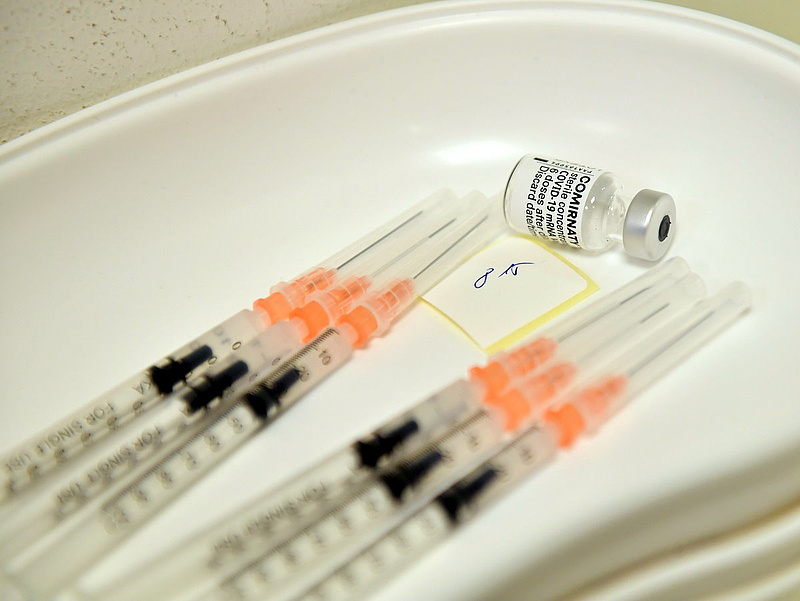a Lancet The primary event / safety data from a multicenter, randomized, randomized controlled Com-COV trial in England is published in the May 12 issue of the journal. The social networking site Facebook Szabolcs Dobson is a Pharmacist Licensing Expert.
The 13-month study included 830 people who did not have an underlying disease over the age of 50 or who had moderate well-controlled primary disease.
According to the test plan, the following groups are evaluated:
- 2 servings AstraZeneca Vaccine with an interval of 28 days;
- 2 doses of AstraZeneca vaccine 12 weeks apart – as a control;
- 2 doses of Pfizer / BioNTech vaccine 28 days apart;
- 2 doses of Pfizer / BioNTech vaccine 12 weeks apart – as a control group;
- AstraZeneca as the first vaccine, followed by the second Pfizer / BioNTech vaccine after 28 days;
- AstraZeneca as the first vaccine, followed by Pfizer / BioNTech as the second vaccine after 12 weeks;
- Pfizer / BioNTech vaccine as the first vaccine, followed by the second vaccine by AstraZeneca after 28 days;
- Pfizer / BioNTech vaccine as the first vaccine, followed by the second AstraZeneca vaccine at 12 weeks.
The primary immunological findings will be reported in June 2021, so data on adverse events for vaccines administered at only 28-day intervals have been published in the Lancet article. Accordingly, systemic adverse reactions were more common in both the mixed vaccination series (AstraZeneca vaccine first, then Pfizer / BioNTech and vice versa) of the same vaccination series.
That is, when AstraZeneca was the first vaccine and Pfizer / BioNTech the second, 37 (34 percent) reported a fever among 110 vaccines, compared to 11 vaccines out of 112 (10 percent) observed with the two AstraZeneca vaccines.
When Pfizer / BioNTech ranked first and AstraZeneca ranked second, the fever vaccination rate was 41 percent (47 out of 114), compared with 21 percent (24 out of 112) who received Pfizer / BioNTech alone.
Similar results were observed for chills, fatigue, headache, joint pain, malaise, and muscle aches. Dobson wrote, based on an article published in The Lancet, that no one was hospitalized, and most of these symptoms appeared within the first 48 hours after the vaccination.
Paracetamol is antipyretic
- 36% of those vaccinated with AstraZeneca alone (40 out of 112)
- 57% of those vaccinated first with AstraZeneca and then with Pfizer / BioNTech (63 out of 110),
- 41 percent of those vaccinated with Pfizer / BioNTech alone (48 out of 117),
- Whereas 60% of those vaccinated first with Pfizer / BioNTech and then AstraZeneca (68 out of 114) took it.
There were no significant differences in hematological and biochemical properties and thrombocytopenia (decrease in the number of platelets) was not observed on day 7 after the second vaccination.
Dobson wrote based on the Lancet article, that it is conceivable that people younger than those studied might have a higher rate of real-life reaction to a mixed vaccination series.












































